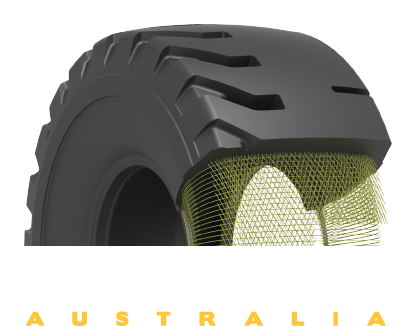TyreInfo
Ignorance of the law is no excuse, but, when the law is ignorant what is the outcome?
Monday, September 07, 2015
In Australia a vehicle can be defected having insufficient tread on a tyre, ie, it is worn below a certain level.
The thinking is sound, the tread on a tyre enables traction for braking and steering, both critical functions for a vehicle of any size.
If a tyre is not inflated correctly then it will not perform as expected, braking and steering will be compromised.
Vehicle inspectors are unable to defect a vehicle if it is operating with tyres that are not correctly inflated.
Which is less safe, a properly inflated tyre with a low tread volume or an under inflated tyre?
Vehicle designers make specific recommendations for tyre pressures. If the tyre pressures are not as designers specify the vehicle will not perform as designed, i.e. braking distance will be increased, the vehicle will not steer as required or expected and it may experience a catastrophic tyre failure. (reference in vehicle tyre placards).
Some heavy vehicles (trucks) may undergo an approval process known as Performance Based Standards or PBS.
https://www.nhvr.gov.au/road-access/performance-based-standards/pbs-vehicle-standards
The vehicle design is simulated using computer modelling to assess the apparent safety of the vehicle. In this simulation, precise data sets for tyres are used. The vehicle is modelled using a specific tyre (brand, pattern and specifications cannot be varied in operations) set at a specific pressure. If the simulation is acceptable, the vehicle is produced and can be operated on public roads.
However, there is no confirmation that whilst in operation the tyres are maintained at the inflation pressures as tested. If the pressures vary, the vehicle will not perform as simulated. The authorities “trust” the operators to conform.
Every tyre manufacturer has charts and graphs on how tyre inflation affects tyre wear and fuel consumption, well-accepted facts. Even President Obama commented in 2014 on the importance to public safety and the economy for setting tyre pressures correctly.
Australia does not recognise under inflated tyres as a safety critical issue. Other jurisdictions such as the USA, the EU, Korea, even China recognise underinflated tyres as an important factor in road safety and the economics of vehicle operations.
Tyres are the sole connector between the vehicle and the pavement, the critical safety item that determines braking and steering. Why do Australian vehicle regulations ignore tyre inflation?
Why do safety bureaucrats turn to solutions ever increasing in complexity and expense ignoring the most basic of all safety systems on a modern motor vehicle, the tyres? KISS!
Why is Australia so laggard when it comes to tyre safety? New Zealand has had a tyre safety month for 8 years.
Why is Australian law so lacking in this area? The law, or lack thereof, is an ass I contend.
